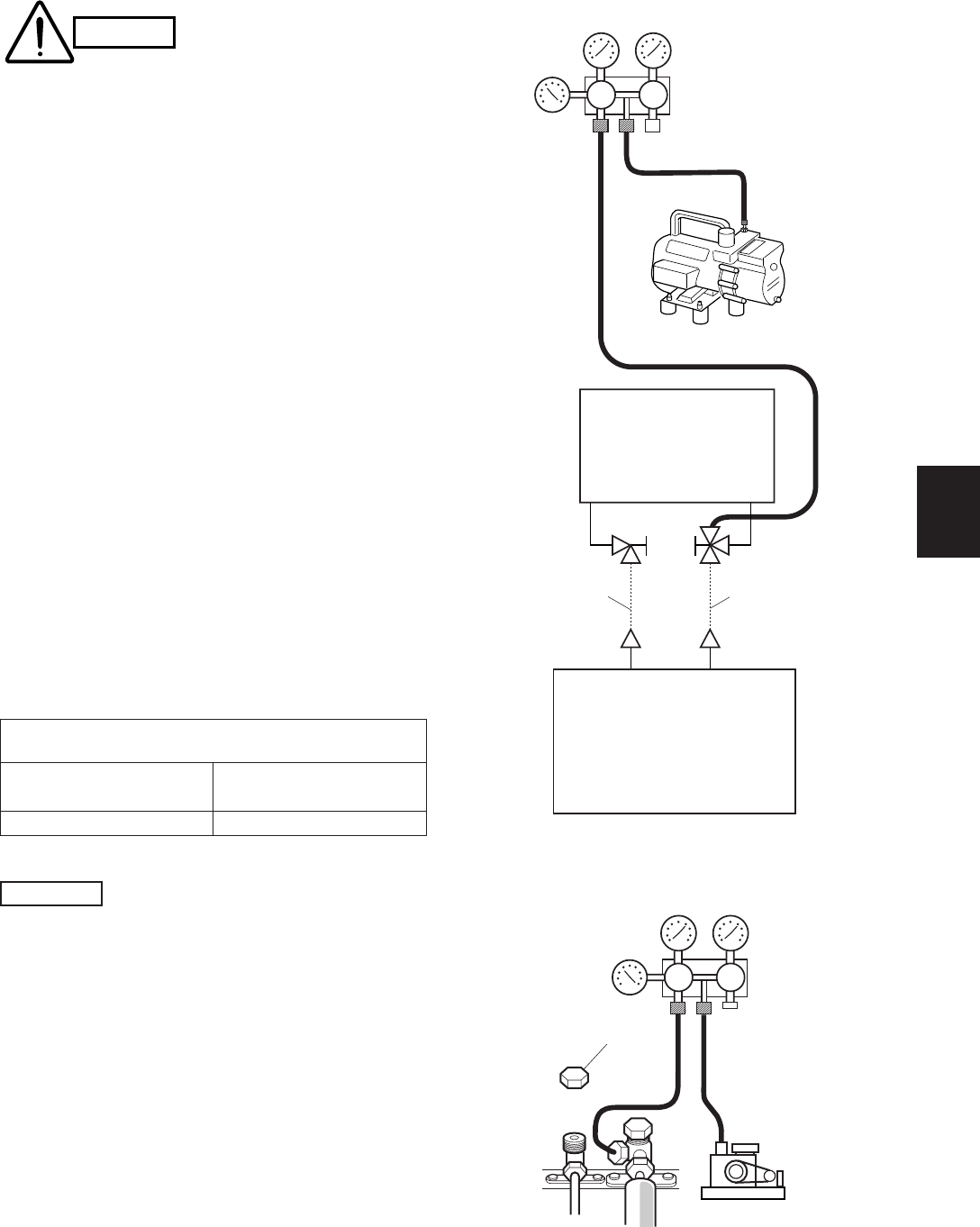
55
55
5
C
83
S4359146
CAUTION
To avoid nitrogen entering
the refrigerant system in a
liquid state, do not use the
nitrogen cylinder up side
down. Use the cylinder in a
vertical standing position.
(Refer to the previous page.)
(4) Do a leak test of all joints of the tubing (both
indoor and outdoor) and both wide and narrow
service valves. Bubbles indicate a leak. Wipe off
the soap with a clean cloth after the leak tests.
(5) After the system is found to be free of leaks,
relieve the nitrogen pressure by loosening the
charge hose connector at the nitrogen cylinder.
When the system pressure is reduced to normal,
disconnect the hose from the cylinder.
Evacuation
(1) Attach the charge hose end (described in the
preceding steps) to the vacuum pump to evacu-
ate the tubing and indoor unit.
Confirm that the “Lo” knob of the manifold valve
is open. Then, run the vacuum pump. The
operation time for evacuation varies with the
tubing length and capacity of the pump. The
following table shows the required time for
evacuation:
The required time in the above table is calculated on
the assumption that the ideal (or target) vacuum
condition is around 10 mmHg abs.
(2) When the desired vacuum is reached, close the
“Lo” knob of the manifold valve and turn off the
vacuum pump.
If tubing length is
less than 50 ft.
45 minutes or more
If tubing length is
longer than 50 ft.
90 minutes or more
Required time for evacuation
when 30 gal/h vacuum pump is used
NOTE
Vacuum pump
Cap
Narrow tube
Wide tube
Manifold valve
Vacuum
gauge
Lo Hi
0540_C_I
Fig. 11-4
Manifold valve
Pressure
gauge
Lo Hi
Outdoor unit
Service
valve
Wide tubeNarrow
tube
Indoor unit
2091_C_
I
Vacuum pump
*
3-way valve is used for 3642 type.
*
Fig. 11-3


















